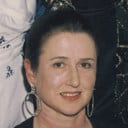The several thousand profoundly deaf people in New Zealand, and those who live and work with them, will benefit greatly from the first dictionary of New Zealand Sign Language, now being prepared in a major project based at Victoria University.
Nearly quarter of a million dollars in sponsorship has been raised for the dictionary, a joint effort by the University and the New Zealand Association of the Deaf. Professor Graeme Kennedy, director of Victoria’s English Language Institute, is chairperson of the National Editorial Board and managing editor for the dictionary.
“Sign language is a language in its own right, not just a collection of signs for English words,” Professor Kennedy said. “One sign may have a meaning that can be expressed in English only by several words, and the order of ‘words’ can be different from that in English sentences. Signing allows people to communicate as quickly as people talking.
“The signs are not static, they are movements with very many elements including the direction of movement, the orientation and shape of the hands, the height of the movement in front of the body, facial expression and so on. That makes it difficult to describe the signs, but we have developed a very sophisticated computer system to process the information being gathered and to print out the results.”
The dictionary will consist of a list of up to 5000 signs, each accompanied by a diagram with arrows to indicate movements. As well, each entry will include a verbal description of the movement of the hands, a list of synonyms, an example of use of the English gloss in a sentence, and a “hint” to help understanding and memorising. For example, under the headword “ask” the prototype dictionary listing says “Right hand, palm down and slightly curved, fingers pointing forward, moves forward at shoulder height in repeated touching action. Brows raised; eyes open wide” and offers the hint “Nudging someone into doing something”.
The project arose from an approach to Victoria by the Association of the Deaf. After an agreement was formalised the National Editorial Board was set up, with four members from the association and three from Victoria.
“The deaf are one of the most neglected minority groups in New Zealand, in terms of their opportunities for education and the share of ‘social equity’ they actually receive,” Professor Kennedy said. “The number of profoundly deaf people — mainly those born deaf — in New Zealand is usually given as 3000 to 5000. Very few have the equivalent of a secondary school education, and as far as we know only one or two have graduated from a university. As well, there could be as many as 430,000 people who have impaired hearing.”
Work on the project got under way last year. After advertising internationally the board hired two New Zealand residents: compilation editor Pat Dugdale, who is totally deaf and is a graduate from a British university; and technical editor David Moskovitz, a hearing-impaired American graduate with skills in linguistics, mathematics and computing.
Phase one of the work was a national survey on what kind of dictionary was needed, consulting both deaf and hearing people.
Then the team developed a prototype of the dictionary, producing a listing for a number of words that could be circulated for feedback from interested groups.
“The signs are collected on video, in the context of deaf people signing to one another,” Professor Kennedy said. “Groups of experienced signers of different ages then validate the signs collected, and this validation is repeated in Auckland and Christchurch. Later the signs will be validated in four other centres as well.”
Work is now continuing on production of the dictionary. It is expected to take about three years before it is ready for publication.
In addition to the considerable support provided by the University with accommodation and other services, the Dictionary of New Zealand Sign Language has the following major sponsors: the New Zealand Lottery Grants Board ($120,000), the Roy McKenzie Foundation ($40,000), Telecom ($30,000), the Ministry of Education’s Contestable Equity Fund ($35,555), the VUW Internal Grants Committee ($15,000) and the J R McKenzie Trust ($6000).
Photo caption: Professor Graeme Kennedy discusses the dictionary with compilation editor Pat Dugdale.

























